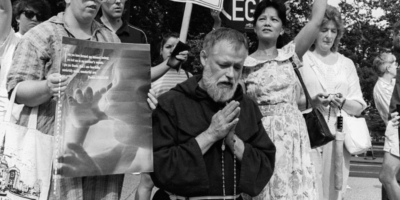Feminist Scholarship.new
From time to time, LILITH lets readers know of recent academic work of particular interest to Jewish feminists.
Gendering Magic in Late Antique Judaism, by Mehssa Aubin, Duke University, PhD. Dissertation.
Jewish women have been portrayed throughout history as mothers, queens,princesses, teachers, helpmates and footstools. In rabbinic Judaism they were also feared for their powers of sorcery. These were girls like the estimable Rabbi Nachman’s daughters, who apparently stilled boiling cauldrons with their bare hands and didn’t get burned (BT Gittin 45a).
According to Mehssa Aubin, by linking femaleness with religious and polytheistic magic, the rabbis ensured that women would never have positions of power in rabbinic Judaism. Aubin reveals that when whispered incantations and spells over spices were conducted by “others” (women), they were denounced as magic; when performed by the rabbis—a practice she documents—they were considered simplypart of the trappings of rabbinic Judaism.
‘From Where Have You Come and Where Are You Going’: Hagar and Sarah Encounter God, by Toba Spitzer, Reconstructionist Rabbinical College, class essay.
Of all of the divine-human encounters in the Bible, only five occur between a woman and God. In her prize winning essay, Toba Spitzer looks at Hagar’s two encounters and Sarah’s single one (a reprimand) and concludes that the Torah acknowledges that the place in which women find themselves impacts their communications with God. Twice Hagar was thrust out of her home and left to die in the desert, where she received Divine comfort. Sarah was rebuked by God as she waited on thethres hold of her tent, eavesdropping on Abraham discussing her future with the Divine, laughing to herself over the suggestion that in her old age she might bear a child. It is in those in-between places outside our comfort zones. Spitzer argues, where biblical characters (and all of us) have the greatest potential for an encounter with the Divine.
The Manifestation of Shekhinah in Jewish Women’s Ritual; An Exploration of Tkhines and Women’s Haggadot, by Paulana Layman, Concordia University, MA thesis.
Time was the Shekhinah and the prayers She inspired played a central role in the lives of Jewish women. Though Shekhinah has been revived in recent years. Her staying power had not been impressive. Looking at the function of Shekhinah in Medieval Yiddish female prayers, tkhines, Paulana Layman offers a challenge to the current revival, particularly in feminist Passover haggadot. Just as tkhines were recited by women in the privacy of their homes,outside the structures of mainstream Judaism, similarly today. Layman argues, feminist haggadot are mainly used at women’s—and not family—seders. In our day, she asks, will Shekhinah be brought into normative Judaism, or will She remain part of a marginal “woman’s culture”?


